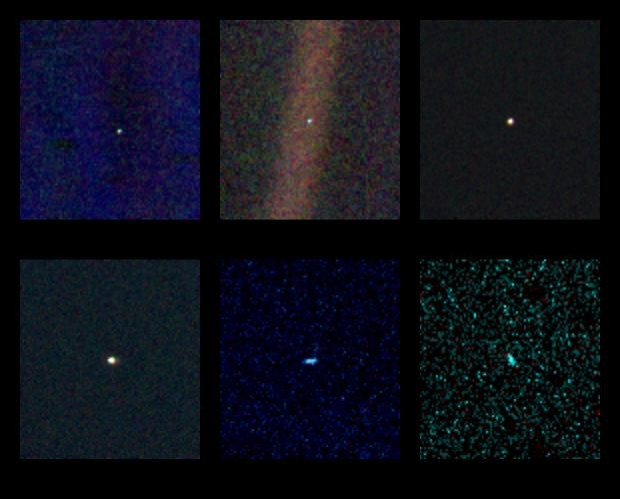Valentine's Day special for 'pale blue dot' image that turns 25 today

Valentine's Day could be the best day to celebrate your love for the 'pale blue dot' spinning away in the vast darkness of space.
It was on February 14, 1990, that the Voyager 1 spacecraft, launched in 1977, looked back at our solar system and shot the first-ever snaps of the planets, including the 'pale blue dot' or planet Earth.
'"There is perhaps no better demonstration of the folly of human conceits than this distant image of our tiny world. To me, it underscores our responsibility to deal more kindly with one another and to preserve and cherish the pale blue dot, the only home we've ever known," wrote Carl Sagan, moved by the distant shot of the home planet.
Voyager 1 is more than three times farther from Earth today than it was on Valentine's Day 25 years ago. Today, Earth would appear about 10 times dimmer from Voyager at 19,500 million kilometres.
Nasa had turned the craft to face the planet on the request of Carl Sagan who was a member of the Voyager mission. The picture inspired the title of his 1994 book Pale Blue Dot: A vision of the human future in space.
The shot taken from beyond Neptune became the first "family portrait" of the solar system capturing Neptune, Uranus, Saturn, Jupiter, Earth and Venus. Mars, Mercury and Pluto were missing due to too less or more sunlight.
Three of the frames showed the Earth as a tiny blue point of light in the empty space.
Each frame was taken using a different colour filter: blue, green and violet, with different exposure times. They were then recombined to produce the image that became the 'Pale Blue Dot'.
The pale blue colour of the dot is the result of polarisation and scattering of the light reflected from Earth. The polarisation is the sum effect of various factors such as cloud cover, oceans, forests, deserts, snowcaps etc.
"Our planet is a lonely speck in the great enveloping cosmic dark. In our obscurity – in all this vastness – there is no hint that help will come from elsewhere to save us from ourselves.
"The Earth is the only world known, so far, to harbor life," Sagan said. "There is nowhere else, at least in the near future, to which our species could migrate. Visit, yes. Settle, not yet."
"Twenty-five years ago, Voyager 1 looked back toward Earth and saw a 'pale blue dot,' an image that continues to inspire wonderment about the spot we call home," said Ed Stone, project scientist for the Voyager mission, based at the California Institute of Technology, Pasadena.
Voyager 1 was 40 astronomical units from the sun at the moment it shot the picture. (One astronomical unit is 93 million miles, or 150 million kilometres.)
Today, at a distance of 130 astronomical units, it is the farthest human-made object from Earth, and it still regularly communicates with our planet.
Mission specialists turned the camera off back in 1977 so that the computer controlling it could be repurposed. The spacecraft is still operating, but can no longer take images.
In August 2012, the spacecraft entered interstellar space -- the space between the stars.
Voyager 1 and its twin, Voyager 2, were launched 16 days apart in 1977. Taking advantage of a special alignment of the outer planets that happens every 176 years, Voyager 1 took slingshots from one planet to the next, assisted by the first planet's gravity.
Both spacecraft flew by Jupiter and Saturn. Voyager 2 also flew by Uranus and Neptune.
After its close approach to Jupiter when it sent back tantalising pictures back home, Voyager 1 found two new moons of Saturn as well – Thebe and Metis. Additionally, it sent back detailed pictures of the Galilean moons (Io, Europa, Ganymede and Callisto) as well as Amalthea.
In 1998, Voyager 1 sped past Pioneer 10 to become the farthest machine humans have ever sent from Earth. It is speeding away at about 11 miles per second (17km per second).
Both spacecraft carry sound records on copper disks with sounds ranging from whale calls to the music of Chuck Berry and spoken greetings in 55 languages.
The craft are both powered by a plutonium-based thermoelectric generator which will support most of the on board operations till 2025.
© Copyright IBTimes 2025. All rights reserved.





















